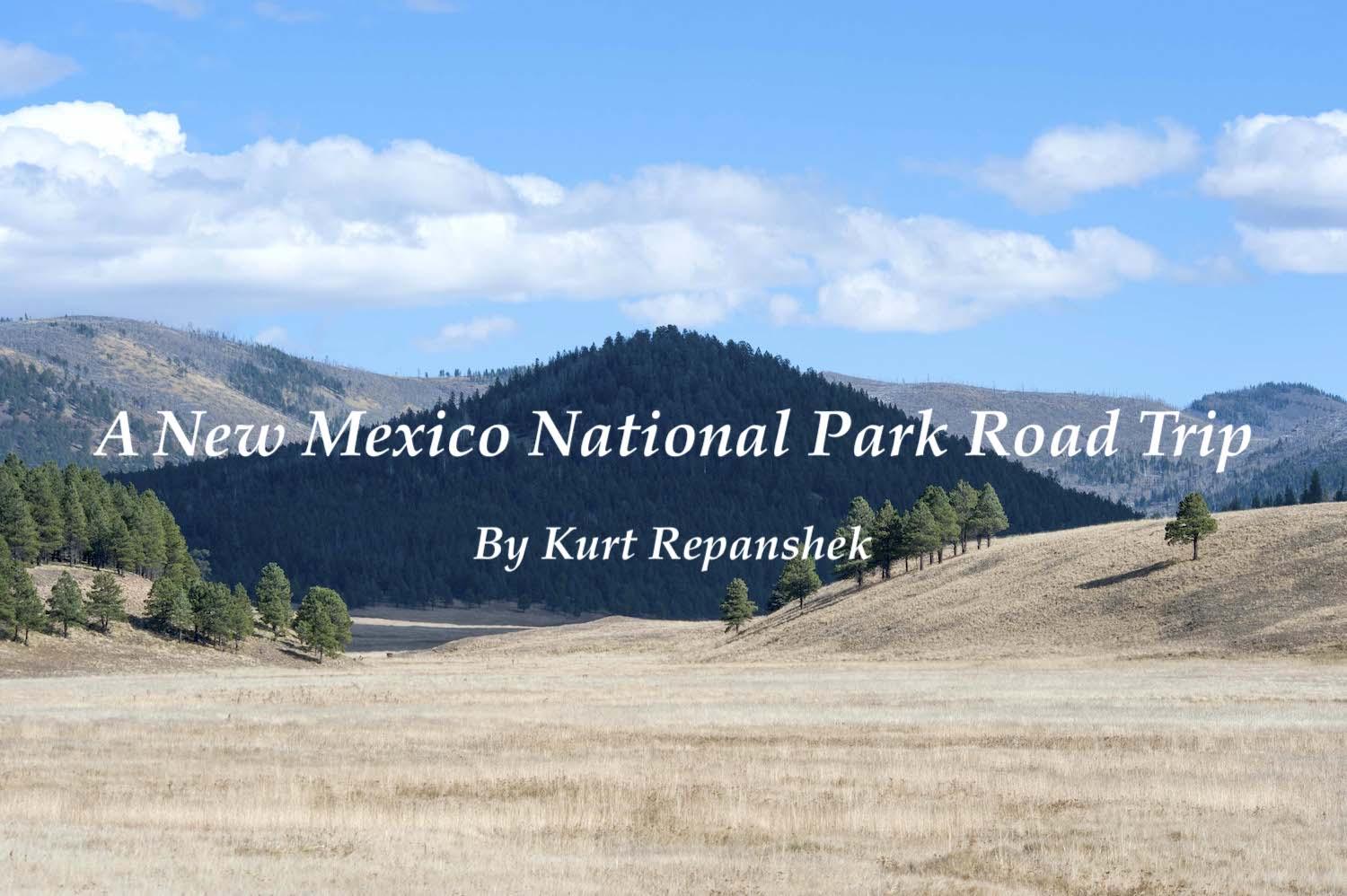
ON THE ROAD IN NEW MEXICO -- Road trips through the National Park System can take you to not just one, but to many, destinations. Along with Patrick Cone, the Traveler's special projects editor, I found that to be the case during a late fall swing through northern New Mexico. Ahead of us were Valles Caldera National Preserve, Bandelier National Monument, and Pecos National Historical Park ... and some unexpected surprises.
We had left sunset behind us in the village of Cuba and headed up into the Santa Fe National Forest when the cat crossed our path. The splash of the pickup's headlights briefly illuminated the long and sinuous body, with a tail to match, before the mountain lion vanished into the ponderosa pine forest.
We were in the closing days of October, and the temperature would drop to 10° Fahrenheit overnight in the Rio De Las Vacas Campground, but the lion spotting proved to be a good omen for our four-day swing through a slice of the National Park System somewhat off the beaten path. Valles Caldera, Bandelier, and Pecos had all remained unchecked on our to-do list, and we were determined to visit them for a variety of stories before winter settled in, and were not disappointed.
Northern New Mexico really is a Land of Enchantment, as the state's nickname asserts. It's a rugged place, with peaks climbing into the clouds above 13,000 feet and serpentine roads coursing across the rumpled, thickly forested landscape. Bands of elk are numerous in the national forest and Valles Caldera, as are bear. Mountain lions aren't as numerous, with only about 2,500 in the entire state, according to the Mountain Lion Federation, though the cats call both the national forest and Valles Caldera home and have been known to pass through Bandelier and Pecos.
Late fall might be a tricky time to visit the three parks. Daylight is fading, snowstorms are not unusual. But if your calendar is clear and you're looking to explore the park system, the payoffs here can be great, ranging from fewer visitors in the parks and gorgeous fall colors to more visible, and audible (bugling elk), wildlife. On top of that is the incredible beauty and rich history on display in the parks. Of course, crawling along a narrow, winding Forest Service road might not be your best approach to these parks, but if your pickup carries a camper and you have the time, it certainly adds to the experience. A quicker, possibly more comfortable, approach to these parks would be flying into Albuquerque or possibly Santa Fe and renting a vehicle.
Whichever approach you take puts all three parks within reach. Here's a quick overview of what you'll find.
Valles Caldera National Preserve
This not quite 89,000-acre unit of the National Park System is a relative newcomer, having been added to the system in 2016. Prior to that it had been managed by a private-public partnership, the Valles Caldera Trust, an experiment in public land management with the hoped-for-outcome of increased efficiency and economy of public lands management and "decentralized public land management."
Human history here dates back 10,000 years, to a time when Paleoindians would travel to the caldera to collect obsidian for spearpoints and arrowheads. Eight-hundred years ago, ancestral Puebloans settled in the region and grew crops, while Spanish settlers arrived in the 1500s with their sheep herds. Ranching took hold in 1860, when a land grant given to the descendants of Luis Maria Cabeza de Baca gave rise to Baca Location No. 1.
Over the decades there were the sort of legal battles you might expect would revolve around a resource-rich tract of land. There were logging interests, mining interests, ranching interests, and even tourism interests. By the year 2000, they largely disappeared when the federal government purchased the property.
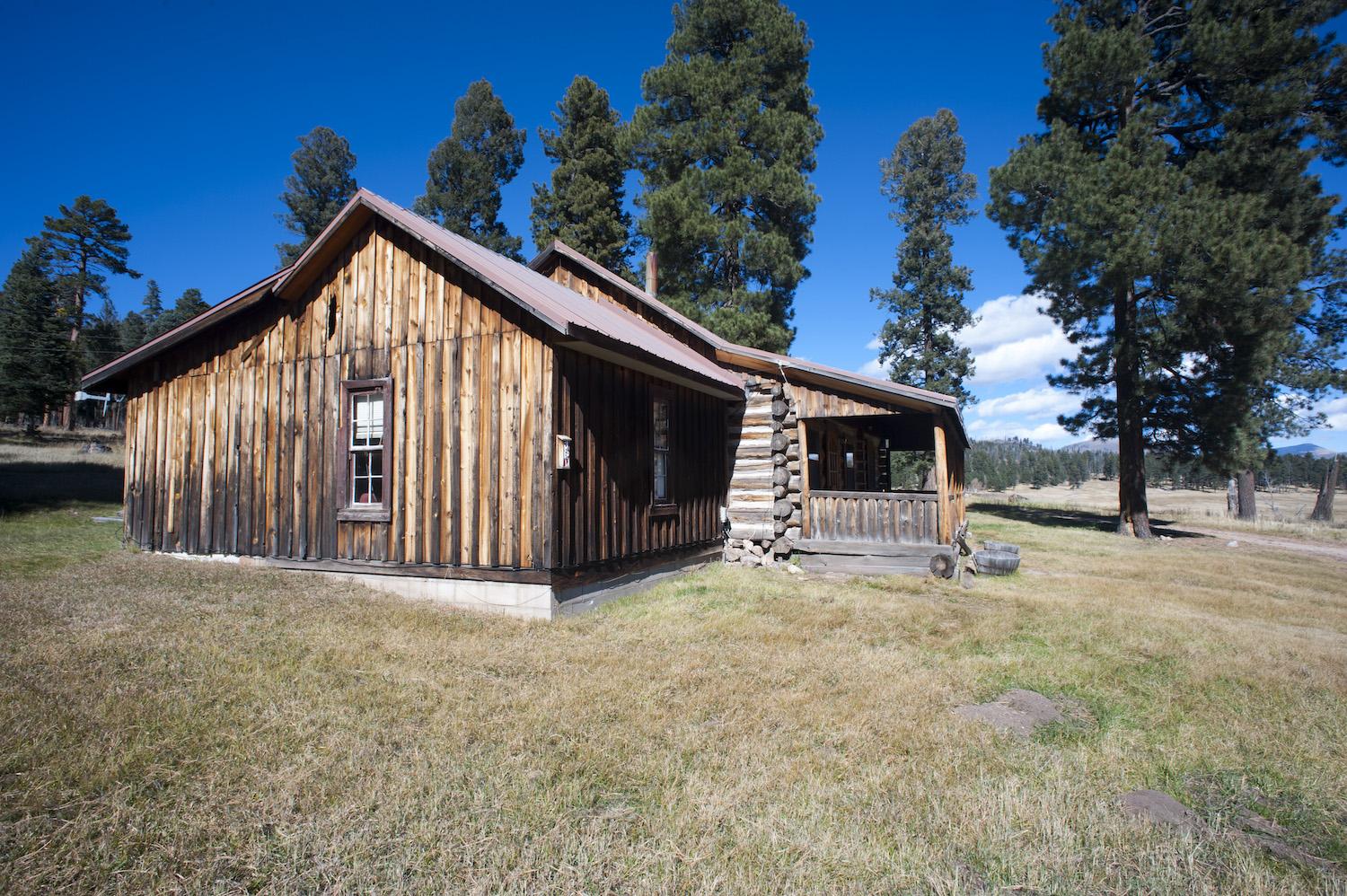
The Longmire Cabin overlooking Valle Grande at Valles Caldera National Preserve/Patrick Cone
Among the assets the government obtained, in addition to the land, was a small collection of cabins used when the Frank Bond family ran livestock here. One of the cabins appears briefly in the Longmire television show of a decade ago. The cabins remain, though in serious need of rehabilitation.
The land's geologic history dates back much farther than the human history, some 1.25 million years to when a volcanic eruption said to be at least 300 times larger than that of Mount Saint Helens's eruption in 1980 reconfigured the landscape by creating the large caldera the preserve protects.
A visit in fall is almost certain to earn you access across the preserve. While park staff is working on a long-range visitor use plan, for now just 35 vehicles a day are allowed to negotiate the dirt roads that wind across the caldera, and that number is seldom reached, particularly in mid-week.
Your first stop a short distance from the visitor entrance station is the historic cabin district. A visitor center there in a log cabin offers memorabilia, interpretive materials, and a chance to talk to a ranger. From there you can photograph the cabins and gaze out across the Valle Grande, an immense, pine forest-rimmed grassland that is crowded with elk at times, before heading deeper into the preserve along the dirt road that runs north to San Antonio Creek.
Enter near the preserve's southwestern corner above Jemez Falls and you can walk a short distance to Sulphur Springs, a steaming slice of the preserve that the Park Service is working to restore by clearing out rusted vehicles and broken down structures and, possibly, install a boardwalk to better interpret the geologic and human history here.
Sadly, so far there are no campgrounds inside the preserve, and no backcountry hiking trails.
Bandelier National Monument
Yipping coyotes woke us in the Coyote Loop of the park's Juniper Family Campground. It was a good morning to awake in the park. Cold weather was still off to the north, jays were swooping about, looking for an untended plate of scrambled eggs, and rain was supposed to hold off. Situated on the ponderosa-studded rim above Frijoles Canyon, the campground doesn't prepare you for what you encounter down the entrance road that descends into the canyon proper.
On the way down there are overlooks that provide nice views into the narrow, twisting canyon, but the main attraction waits at the end of the road where there's a small parking lot next to a well-preserved historic collection of stone buildings the Civilian Conservation Corps built after the U.S. Forest Service turned Bandelier over to the Park Service.
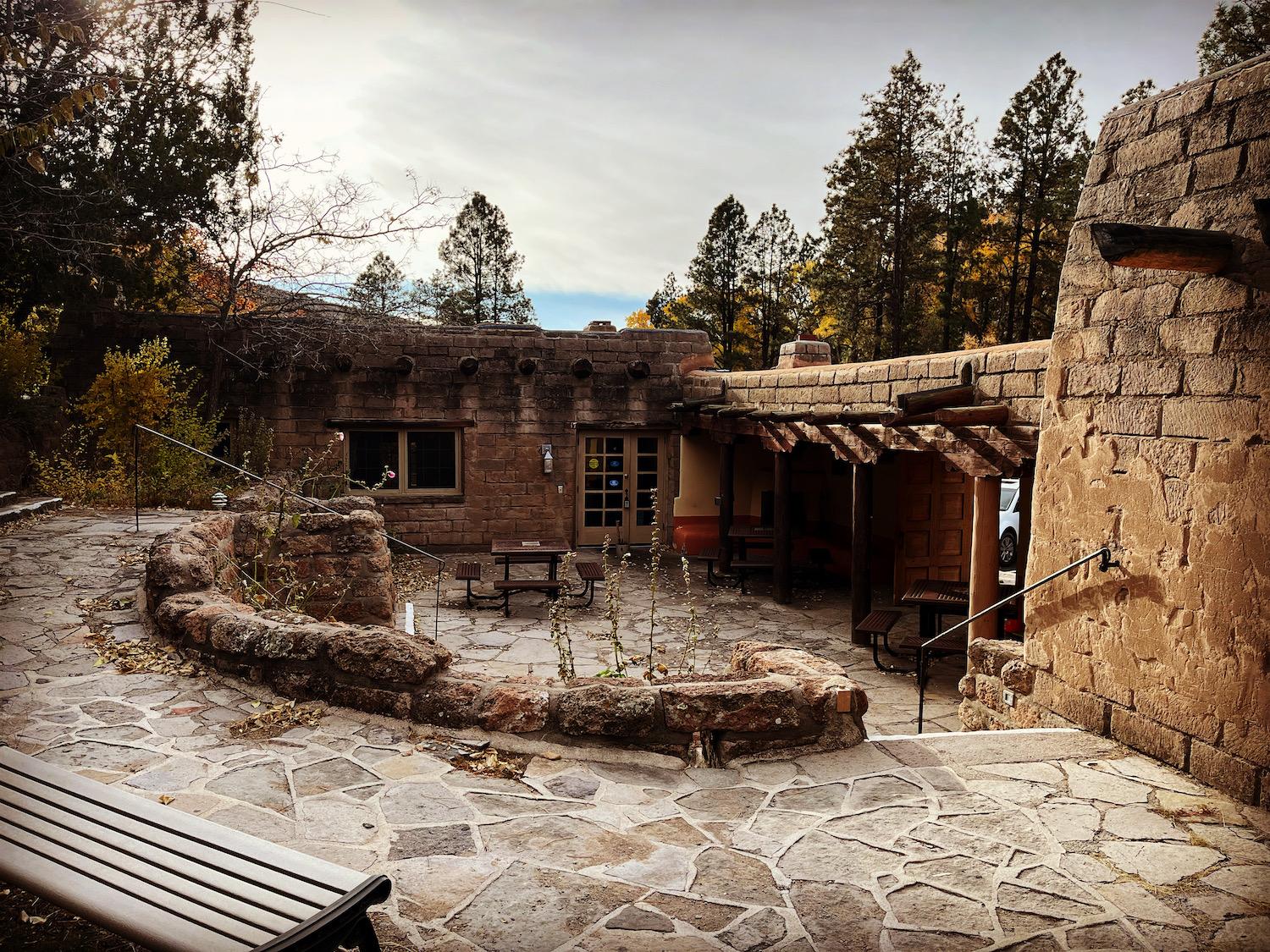
The CCC history at Bandelier alone is worth a visit to the monument/Kurt Repanshek file
You could spend the bulk of your visiting exploring the CCC's work in this park. Along with 31 structures on the canyon floor, those crews carved the road that leads from the rim down into the canyon. The buildings they constructed used local materials and were designed in Pueblo Revival style in an effort to have them blend into the canyon. The buildings, which today are used for employee residences, NPS offices, and concessions, originally served as the Frijoles Canyon Lodge that could accommodate 40 guests. During World War II, scientists from the government lab at Los Alamos were occasionally lodged here, according to the Park Service.
You can obtain a pamphlet in the visitor center that leads you on a walking tour of the historic district. If you take the walk, pay attention not only to the buildings but also to intricately detailed light fixtures and corbels. On the tour you can stop into the cafe for something to eat or drink, and if it's nice, sit out on the patio.
You can walk further into the past, much further, on the trails that wind north into the canyon and to alcove dwellings ancient cultures carved out of the soft volcanic tuff hillsides. Called cavates [pronounced CAVE-eights], these shelters often had walls of tuff blocks erected around them. A number of trails lead you to these shelters. You can find details here and here.
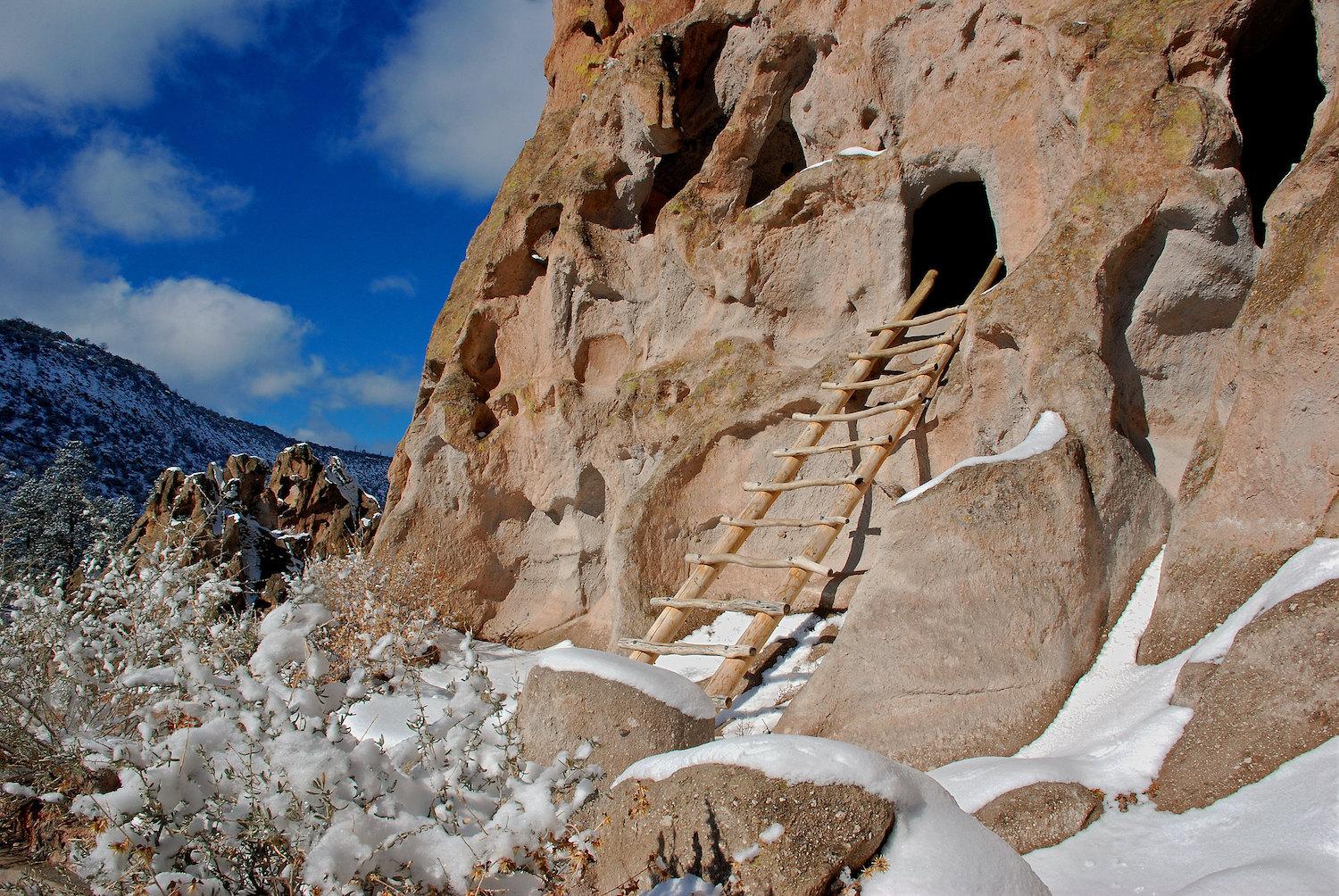
Winter is not a bad time to visit Bandelier and ponder the cavates that once housed families/NPS
While most visitors will reach this area and call their visit good, Bandelier covers 33,000 acres and features backcountry trails that allow you to head out on overnight hikes. You can even enter from outside the park; along New Mexico 289 on the western side you can reach the Pumice Mines Trailhead that descends into the park.
Unfortunately, while there once was a campground with showers and laundry facilities on the canyon floor, that is a thing of the past. Today the nearest lodging, beyond the park campground on the rim, is in Los Alamos and Santa Fe,
Pecos National Historical Park
Located just southeast of Santa Fe, Pecos truly is one of the overlooked gems of the National Park System. Though part of the system since 1965, it never has attracted more than 65,100 visitors in a year, and in 2021 the tally was 58,944.
What makes the park particularly fascinating is the history it protects and interprets. The focal point for many is the Spanish mission and surrounding pueblos, which are indeed captivating and rich in history and stories. As the National Park Service puts it, the park "preserves 12,000 years of human history, including the remains of the Pecos Pueblo and many other American Indian structures, Spanish colonial missions, homesteads of the Mexican era, a section of the Santa Fe Trail, sites related to the Civil War Battle of Glorieta Pass, and a 1900s ranch."
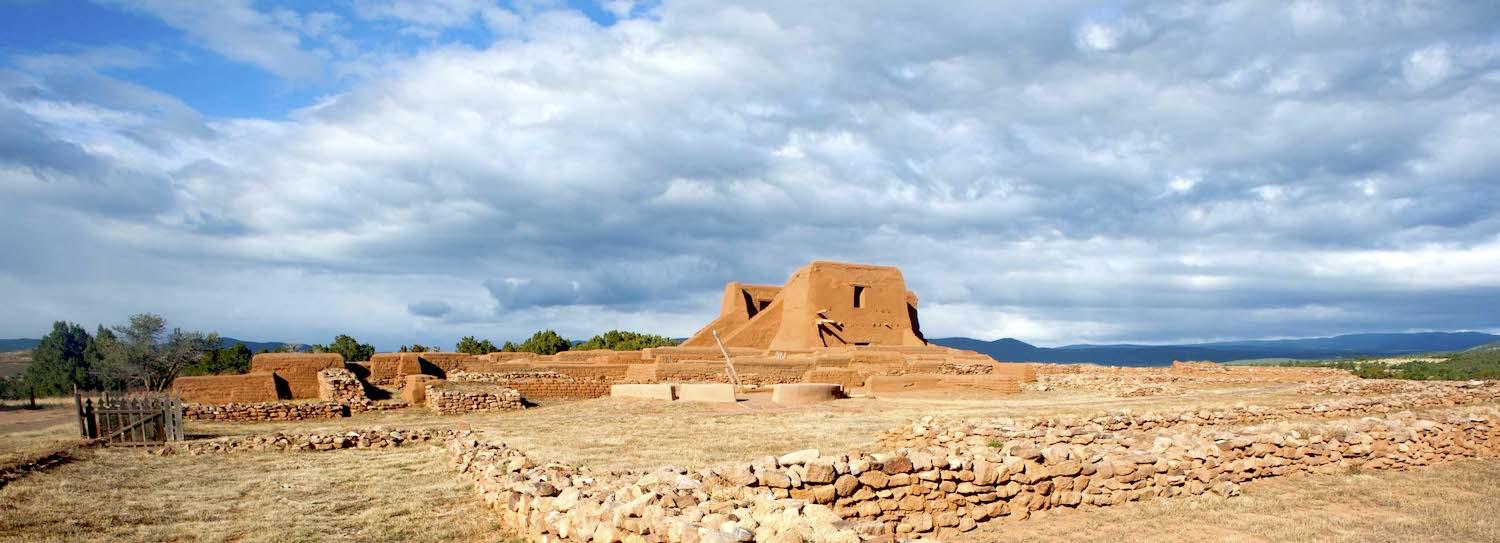
The ruins of the Spanish mission at Pecos National Historical Park reflect a dark history/Patrick Cone
You cannot take all that in and do it justice in just a few hours. A full day might not even be enough if you spend time walking the grounds, climbing down into the kivas, trying to imagine how big the mission that dates to the 1600s really was at its peak. The story of the arrival of Spanish explorers and their Franciscan friars and how they subjugated the Indigenous Pecos population is particularly poignant, as is the revolt the Pecos mounted in 1680 to drive out the Spanish.
Today all that remains of the massive church the Spanish built with native labor is a very small section of the structure that rose in 1625 and continued to grow into the 1700s. Plan your trip carefully and you might be able to join a tour to the "lost church" that dates to 1617.

Artist's rendering of what the finished mission looked like/Lawrence Ormsby via NPS
Then, too, there's the nearby Glorieta Pass Civil War Battlefield unit, which represents a unique aspect of the Civil War. The battle that took place here in March 1862 marked the end of the Confederacy’s New Mexico campaign. Traveler contributor Bob Pahre described it in this 2021 article.
Finally, early in 2023 the park will open to the public the historic trading post that served travelers along the Santa Fe Trail.
A Polish immigrant named Martin Kozlowski originally constructed the Trading Post along the Santa Fe Trail in 1858. It served as one of the last stage stops before trail-weary travelers arrived in Santa Fe after months on the dusty trail. During the Civil War Battle of Glorieta Pass, this building served as a Union hospital. In 1925, rodeo-promoter and entrepreneur Tex Austin purchased the building and turned it into ranch headquarters for his famous Forked Lightning Ranch. In the 1940s, E.E. "Buddy" Fogelson bought the ranch and then brought his Hollywood actress wife, Oscar-winning Greer Garson, to the Forked Lightning Ranch. Together, they worked the land as a hobby ranch and entertained many Hollywood guests. In 1990, the National Park Service acquired the ranch and Trading Post and used it as office space, until 2006, when the building was deemed unfit for occupancy. -- National Park Service
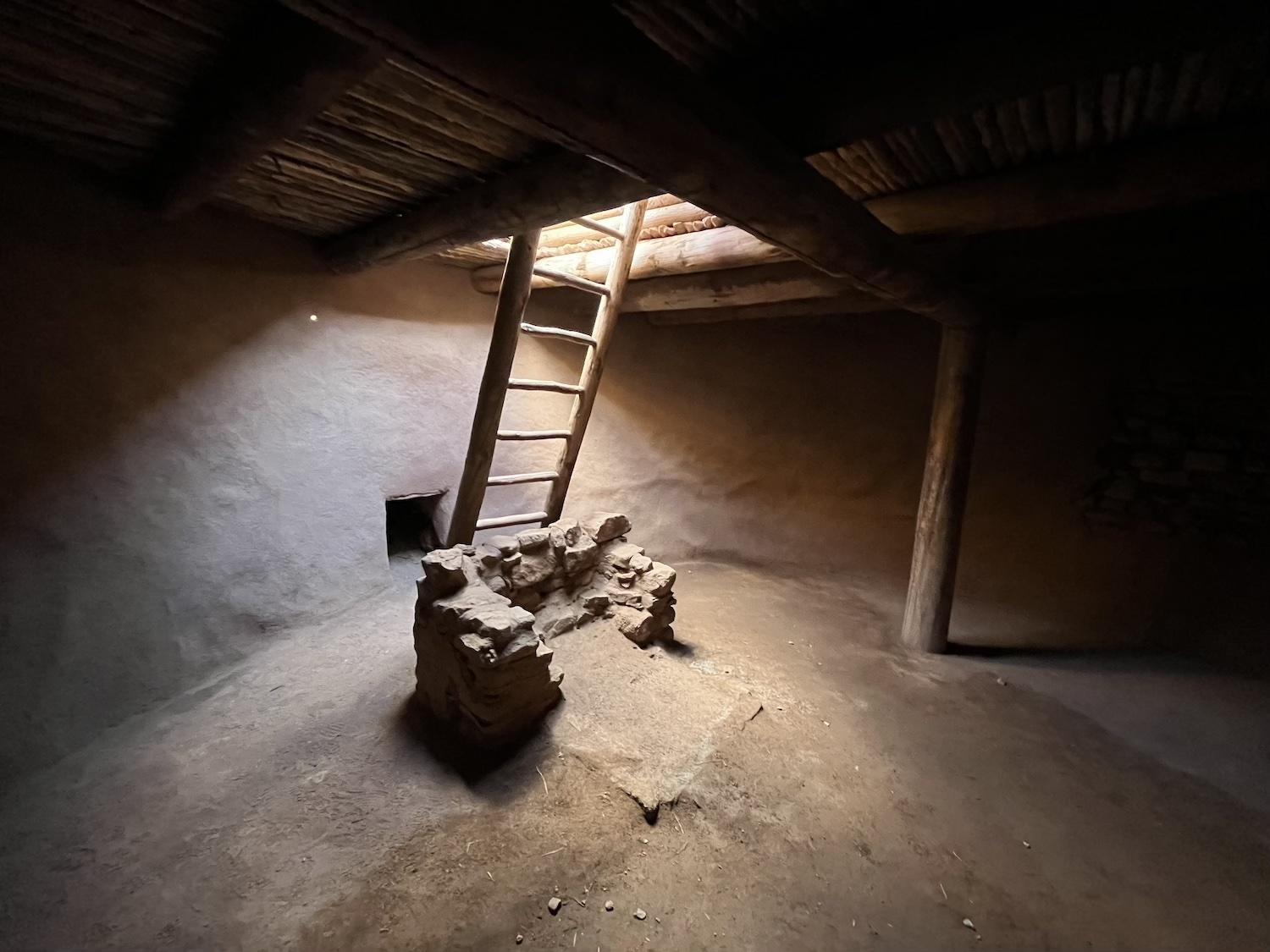
You don't need to wait for spring or summer to visit Pecos. The park operates through the winter and usually has a number of ranger-led tours of the grounds to enhance your visit. And if you visit in the summer and like to fish, check with park staff to see if the Pecos River has been opened to anglers. Three miles of the river open in the summer if water conditions allow, but you'll need a permit to gain access.
A Manageable Road Trip
Three unique parks in one week. It's easily done, either by driving your own rig if you live in one of the neighboring states, or if you opt to fly into Santa Fe or Albuquerque and rent a vehicle. From Santa Fe, Pecos National Historical Park is less than 30 miles away, Bandelier National Monument is less than 45 miles, and Valles Caldera, which borders Bandelier on the monument's western side, is fewer than 65 miles.
Each of these three parks presents a unique slice of natural resources, history, and culture. You won't be disappointed. We certainly were not. And on the drive back to northern Utah, we headed north into Colorado and then east to Hovenweep National Monument, another unique site in the park system if your interests range to Ancestral Puebloans.


Comments
Great summary of 3 very interesting parks. We vistied them in Octobe 2021 and spent 5 dyas camping at Badelier. That geve us a hub to take in Los Alamos NP as well as other area sites. It was an amazing and enchanting trip. I'm glad to hear thah the Park Service will be opening the Kozlowski Trading Post. We only got to view it from outside. From this area we follwed the Santa Fe Trail east to its treminus in Missouri. Lots of adventres to be had on that trip.
Nice summary.